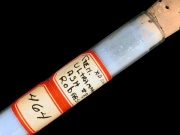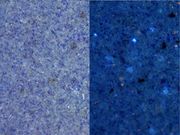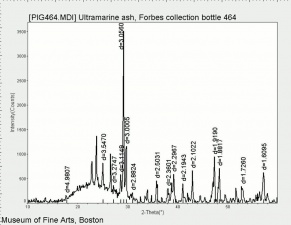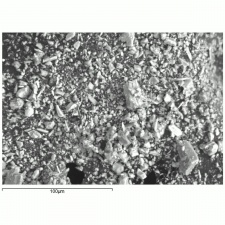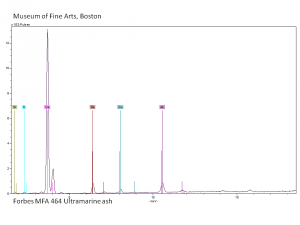Ultramarine ash
Jump to navigation
Jump to search
Description
The end-product of the refining process used to produce natural ultramarine blue pigment from Lapis lazuli. Ultramarine ash contains small blue particles mixed with a large proportion of colorless materials, such as calcite and silicates. Ultramarine ash is a transparent blue-gray pigment that has been used for glazing.
Synonyms and Related Terms
mineral blue; Sander's blue; Saunder's blue; bleu cendres; vein stone
Risks
- No significant hazards.
Physical and Chemical Properties
- Discolors when exposed to weak acids or sulfur fumes.
Resources and Citations
- J. Plesters, "Ultramarine Blue, Natural and Artificial", Artists Pigments, Volume 2, A. Roy (ed.), Oxford University Press: Oxford, 1993.
- Ralph Mayer, A Dictionary of Art Terms and Techniques, Harper and Row Publishers, New York, 1969 (also 1945 printing)
